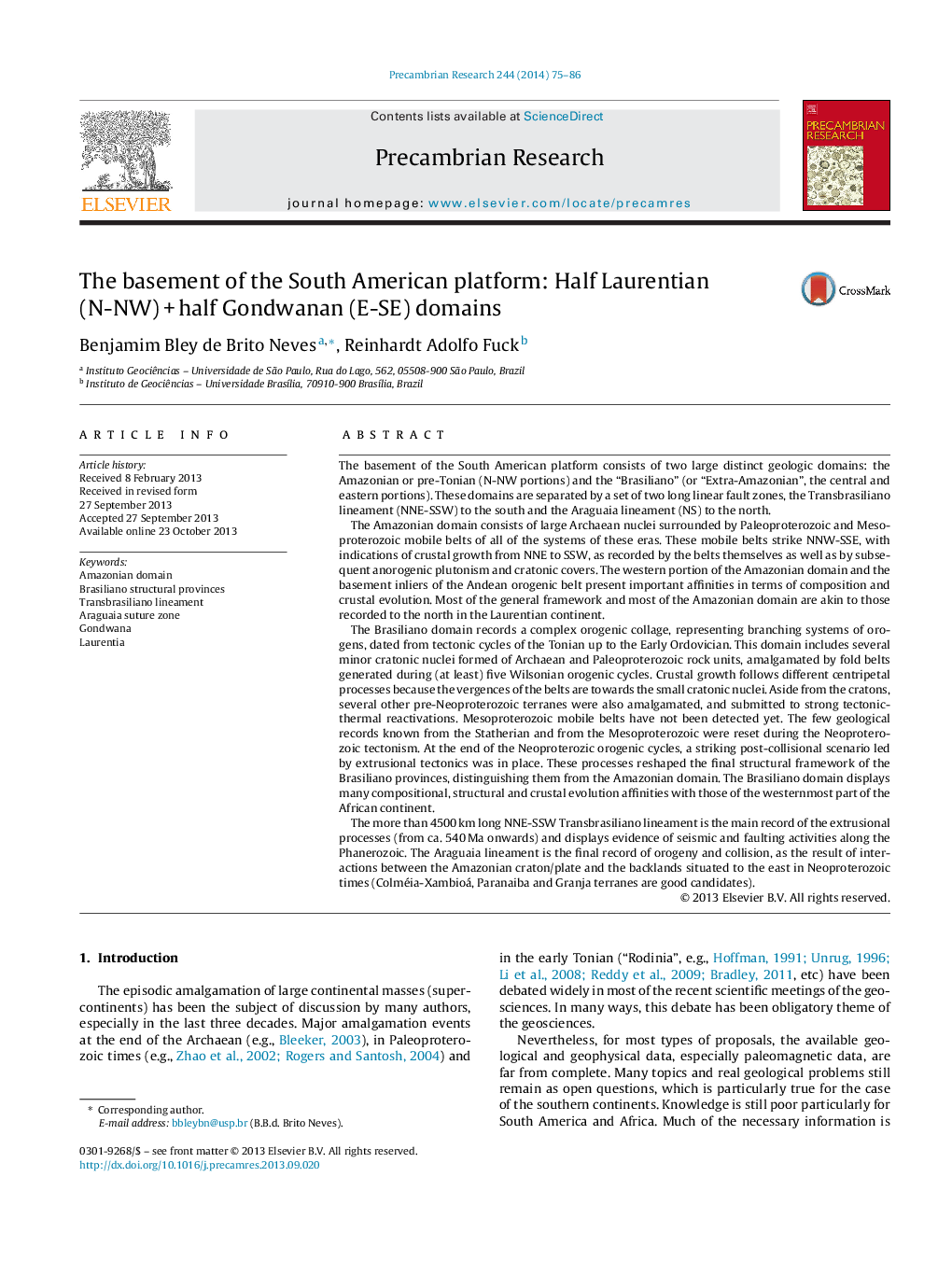| کد مقاله | کد نشریه | سال انتشار | مقاله انگلیسی | نسخه تمام متن |
|---|---|---|---|---|
| 4723041 | 1639630 | 2014 | 12 صفحه PDF | دانلود رایگان |

• The South American platform basement comprises a pre-Neoproterozoic Amazonian domain and a Brasiliano domain.
• The Amazonian domain records a geological history similar to the northern hemisphere continents.
• The Brasiliano domain displays small cratons and branching systems of Neoproterozoic fold belts similar to western Africa.
The basement of the South American platform consists of two large distinct geologic domains: the Amazonian or pre-Tonian (N-NW portions) and the “Brasiliano” (or “Extra-Amazonian”, the central and eastern portions). These domains are separated by a set of two long linear fault zones, the Transbrasiliano lineament (NNE-SSW) to the south and the Araguaia lineament (NS) to the north.The Amazonian domain consists of large Archaean nuclei surrounded by Paleoproterozoic and Mesoproterozoic mobile belts of all of the systems of these eras. These mobile belts strike NNW-SSE, with indications of crustal growth from NNE to SSW, as recorded by the belts themselves as well as by subsequent anorogenic plutonism and cratonic covers. The western portion of the Amazonian domain and the basement inliers of the Andean orogenic belt present important affinities in terms of composition and crustal evolution. Most of the general framework and most of the Amazonian domain are akin to those recorded to the north in the Laurentian continent.The Brasiliano domain records a complex orogenic collage, representing branching systems of orogens, dated from tectonic cycles of the Tonian up to the Early Ordovician. This domain includes several minor cratonic nuclei formed of Archaean and Paleoproterozoic rock units, amalgamated by fold belts generated during (at least) five Wilsonian orogenic cycles. Crustal growth follows different centripetal processes because the vergences of the belts are towards the small cratonic nuclei. Aside from the cratons, several other pre-Neoproterozoic terranes were also amalgamated, and submitted to strong tectonic-thermal reactivations. Mesoproterozoic mobile belts have not been detected yet. The few geological records known from the Statherian and from the Mesoproterozoic were reset during the Neoproterozoic tectonism. At the end of the Neoproterozic orogenic cycles, a striking post-collisional scenario led by extrusional tectonics was in place. These processes reshaped the final structural framework of the Brasiliano provinces, distinguishing them from the Amazonian domain. The Brasiliano domain displays many compositional, structural and crustal evolution affinities with those of the westernmost part of the African continent.The more than 4500 km long NNE-SSW Transbrasiliano lineament is the main record of the extrusional processes (from ca. 540 Ma onwards) and displays evidence of seismic and faulting activities along the Phanerozoic. The Araguaia lineament is the final record of orogeny and collision, as the result of interactions between the Amazonian craton/plate and the backlands situated to the east in Neoproterozoic times (Colméia-Xambioá, Paranaiba and Granja terranes are good candidates).
Journal: Precambrian Research - Volume 244, May 2014, Pages 75–86